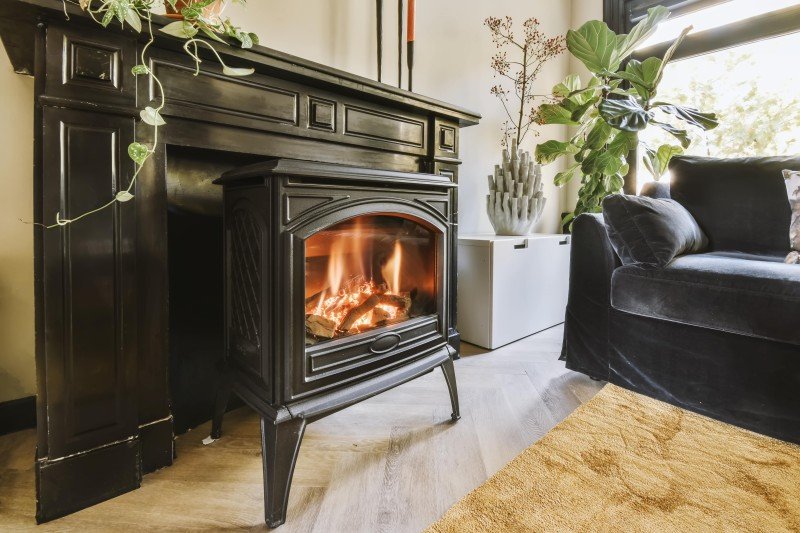Freestanding Stoves for Sale: The Ultimate Guide
Freestanding stoves, also referred to as standalone stoves, are a significantly popular choice for homeowners wanting to boost the heating efficiency and aesthetic appeal of their living areas. They are available in a myriad of styles, sizes, and fuel choices, providing flexibility to meet the diverse needs of consumers. This post explores numerous elements of freestanding stoves, including their benefits, types, and functions, in addition to a guide to acquiring the right stove.
What is a Freestanding Stove?
A freestanding range is a heating device that is not developed into a wall or kitchen cabinetry. Instead, it stands independently in a room and can be positioned in numerous locations, making it a versatile heating solution. These stoves can use various fuels, such as wood, gas, or pellets, and are designed to offer warmth while enhancing the ambiance of a space.
Advantages of Freestanding Stoves
Freestanding stoves are preferred for numerous reasons:
- Heating Efficiency: Freestanding stoves can create substantial heat output while being fuel-efficient.
- Visual Appeal: With numerous designs varying from traditional to contemporary, they can be a centerpiece in any space.
- Installation Flexibility: They can be put in diverse places, permitting simple integration into existing home layouts.
- Cost-efficient: Many freestanding stoves are more economical to install compared to integrated systems.
- Heat Distribution: They can effectively disperse heat through the convection procedure, warming up the surrounding location.
Types of Freestanding Stoves
Freestanding stoves been available in different types based on their fuel source, consisting of:
| Type | Description |
|---|---|
| Wood Stoves | Use traditional wood logs for fuel, using a rustic appeal and an unique ambiance. |
| Gas Stoves | Operate utilizing natural gas or gas, providing practical and controllable heating. |
| Pellet Stoves | Utilize compressed wood pellets as fuel, known for their efficiency and eco-friendliness. |
| Electric Stoves | Usage electrical energy as a power source, readily available in various designs, frequently including modern designs. |
Secret Features to Consider
When shopping for a freestanding range, several features must be taken into account:
- Heat Output (BTUs): Consider the size of the location you wish to heat and choose a stove with a suitable BTU rating.
- Size and Design: Ensure the stove fits the space and complements the room's decor.
- Fuel Type: Decide on the most practical and cost-effective fuel type for your family.
- Efficiency Ratings: Look for the stove's efficiency ratings (like EPA certification for wood stoves) to guarantee you're making an environment-friendly option.
- Security Features: Consider models with safety functions such as auto shut-off, heat resistant glass, or low-clearance options.
Purchasing a Freestanding Stove
When thinking about purchasing a freestanding stove, it is vital to examine numerous crucial elements to ensure you invest sensibly:
1. Budget
Setting a clear spending plan is important when purchasing a freestanding stove. Rates can differ commonly based upon the type, brand name, and functions:
- Basic Models: ₤ 800 - ₤ 1,500
- Mid-Range Models: ₤ 1,500 - ₤ 3,000
- High-End Models: ₤ 3,000 - ₤ 6,000+
2. Research Study Brands and Models
Comprehensive research can help you uncover different options in the market. Some significant brands in the freestanding stove market include:
- Jøtul
- Quadrafire
- Regency
- Lopi
- Harman
3. Speak with Reviews
Check out customer evaluations and professional ratings online to get insights into the efficiency and dependability of different designs.
4. Local Regulations
Inspect regional building codes and policies relating to range installation, specifically for wood and gas stoves, to guarantee compliance.
5. Setup
Consider expert installation, particularly for gas or wood models, as they often require special ventilation or flue systems.
FAQs About Freestanding Stoves
1. Are freestanding Fireplaces And Stove to use?
Yes, when properly installed and maintained, freestanding stoves are safe. Nevertheless, it's vital to follow the maker's guidelines and regional codes.
2. How do I keep my freestanding range?
Regular maintenance includes cleaning up the flue or chimney, checking for blockages, and making sure all components are working properly. Annual inspections by a licensed specialist are recommended.
3. Can I utilize a freestanding range as a main heating source?
Yes, many house owners use freestanding stoves as main heating sources, specifically in areas where traditional heating might be restricted.
4. Are freestanding stoves energy-efficient?
Lots of more recent models are created for high efficiency, providing much better heat retention and lower emissions compared to older models.
5. What is the average life-span of a freestanding stove?
With proper maintenance, the typical life-span of a high-quality freestanding range can be around 15 to 20 years.
Freestanding stoves are a practical and elegant choice for heating homes. By comprehending the different types, advantages, and features readily available, house owners can make educated choices that match their choices and heating requirements. Whether going with a wood, gas, pellet, or electric range, investing in a quality model will offer warmth, atmosphere, and satisfaction for several years to come.

